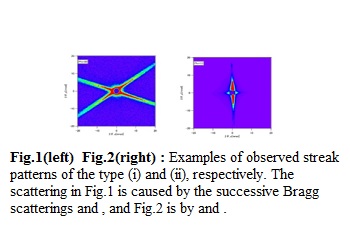
Yoshinori Ohmasa
Kansai University, Japan
Title: Double bragg scattering from highly oriented pyrolytic graphite in small-angle X-ray scattering region
Biography
Biography: Yoshinori Ohmasa
Abstract
Highly oriented pyrolytic graphite (HOPG) is a form of carbon, which is composed of many crystallites arranged uniaxially. The c-axes of the crystallites are aligned along a single direction, while the a- and b-axes are distributed randomly in the plane perpendicular to the c-axis. HOPG is used in a wide range of scientific and technological areas, for example as a monochromator of X-ray and neutron beams.
We measured small-angle X-ray scattering from HOPG and observed radial streak patterns. When the sample is rotated, the number and the direction of the streaks change. The streaks are divided into two categories: (i) A pair of streaks which forms X-shaped pattern. The angle between the two streaks changes with sample rotation, and they appear and disappear in pairs. (ii) A single streak which appears only in a narrow range of the sample rotation angle. Examples of the streak patterns of the type (i) and (ii) are shown in Fig.1 and 2, respectively.
We found that the appearance of the streaks is explained by double Bragg scattering. They appear in the small-angle region because the first scattered X-ray is scattered back to the small-angle region. The streaks of the type (i) is caused by the successive Bragg reflections hkl and hkl with ![]() , and (ii) is by 00l and 00l.The dependence of the streak directions on the sample rotation angle is in good agreement with theoretical prediction.
, and (ii) is by 00l and 00l.The dependence of the streak directions on the sample rotation angle is in good agreement with theoretical prediction.
The double Bragg scattering observed in the present work is an obstacle to obtaining the ‘true’ small-angle scattering. On the other hand, the intensity profile of the double Bragg scattering pattern itself is interesting because it contains various pieces of information on the sample structure. For example, the width and length of the streaks are related to the distribution of crystallites


